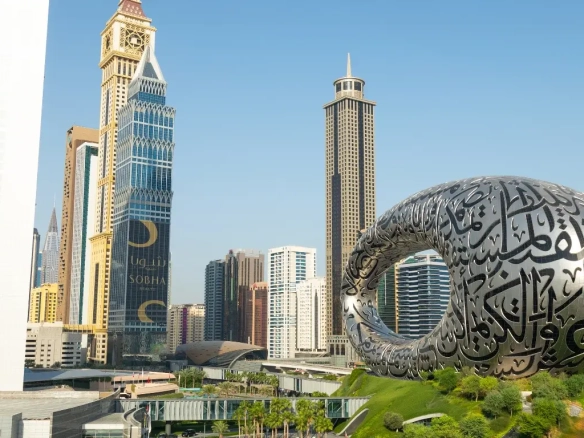When investing in real estate in Dubai, two metrics dominate the conversation: capital appreciation and cash flow (rental income). Both have their merits, and the best strategy often depends on your financial goals, timeline, risk tolerance and market conditions. In this comprehensive guide we’ll explore what each term means, how they apply in the Dubai real-estate market, the trade-offs between them, and how you can determine which strategy suits you best in 2025 and beyond.
What Do We Mean by Capital Appreciation and Cash Flow?
Capital appreciation refers to the increase in the value of your property over time. Put simply: you buy a property, and later you sell it for more than you paid — the difference is appreciation. In Dubai real estate, appreciation is driven by factors like location, infrastructure, demand, supply restrictions and macro-economic policies.
Cash flow means the rental income the property generates after all costs. You buy a property, you rent it out, you collect rent each month/each year. If your rental income minus expenses (maintenance, service charges, void periods, taxes) is positive, you have positive cash flow. Sometimes people call this “rental yield”. In Dubai, rental yields vary depending on location and type of property.
Put simply:
- If you’re chasing growth, you lean toward capital appreciation.
- If you’re chasing income, you lean toward cash flow.
But in real life, investors often try to achieve a balance of both.
Why This Debate Is Especially Relevant in Dubai
Dubai’s property market has some distinct features that make this debate particularly meaningful:
- There is no capital gains tax for individuals in Dubai, which enhances the appeal of capital appreciation.
- The market has seen both rental demand growth and strong price movements — giving both cash-flow and appreciation opportunities.
- Entry-costs vary wildly by location, property type (studio, 1-bed, villa), and whether off-plan or ready. This means different investment strategies suit different investor profiles.
- Some areas offer relatively high rental yields but may have slower appreciation; others offer high upside but may provide little rental income initially. For example: in some mid-market areas yields of 7-8%+ have been seen.

Given this environment, deciding whether you prioritise capital appreciation or cash flow is more than a preference — it’s a strategy decision.
Comparing the Two Strategies: Key Metrics & Drivers
Here’s a breakdown of what drives each, and how you might evaluate them.
Drivers of Capital Appreciation
- Location and infrastructure: Proximity to metro lines, business districts, premium amenities drive price growth.
- Supply & demand imbalance: Scarcity of land and limited new launches in prime zones push value.
- Timing & market entry: Buying early (especially off-plan) often secures lower price and higher upside.
- Macroeconomic / policy factors: Visa reforms, foreign ownership rules, population growth all matter.
Drivers of Cash Flow (Rental Yield)
- Entry price vs rent achievable: Lower purchase price + good tenant demand = higher yield.
- Tenant profile, community amenities, accessibility all affect rent levels and occupancy.
- Running costs: Service charges, maintenance, periods of vacancy reduce net yield. It isn’t just about gross rent/purchase price.
- Property type: Smaller units often yield better percentages; villas often yield lower but longer-term tourists.
Trade-Offs: Appreciation vs Cash Flow
Here are some of the major trade-offs and questions to ask yourself:
- Risk vs reward: High appreciation often means higher risk (market swings, longer horizon, off-plan delays). High cash flow tends to be steadier but may yield lower total return.
- Time horizon: If you’re in it for 10+ years, appreciation may dominate. If you need annual income now, cash flow wins.
- Liquidity & exit strategy: Even if a property has appreciated, you still need to be able to sell when you want. Some properties may appreciate but be harder to sell.
- Entry cost: A property bought at peak price may give low yield and limited appreciation. Buying earlier or in mid-market can improve both.
- Costs matter: For cash flow especially, net yield after all costs matters. If service charges are high or occupancy low, you might end up with weak net income.
- Combining both: Many smart investors pursue a portfolio approach — some properties for rental income, others for capital growth.
What the Data in Dubai Tells Us
To make this concrete, let’s look at what recent reports and research show for Dubai.
- In one investment guide, some areas achieved 12–20% annual capital appreciation in emerging zones.
- Rental yields in many mid-market areas were cited in the 6–9% range, sometimes higher in emerging suburbs.
- Off-plan properties often show higher appreciation (e.g., 15–25% by handover) but may have zero rental income until completion.
- On the flip side, ready properties in established communities tend to yield immediate rental income (but may have slower appreciation).
What we see is that neither strategy is “wrong” — they simply serve different investor goals.
Which Strategy Suits Which Investor?
Here’s how to decide based on your situation:
Choose Appreciation Strategy If You:
- Have a longer time horizon (5–10 years+).
- Are comfortable with some risk and patience (especially with off-plan).
- Are focused on building wealth rather than immediate income.
- Can handle holding costs, taxes, and possible void/risk periods.
Choose Cash Flow Strategy If You:
- Want income now (or soon) rather than waiting.
- Prefer less risk and more visibility on returns.
- Are focused on using the property to generate regular returns (perhaps for funding lifestyle or other investments).
- Are less concerned with ultra-high future upside.
Balanced / Hybrid Approach If You:
- Invest part of your portfolio for income and part for growth.
- For example: one unit in a high-yield mid-market community, another unit off-plan in a growth zone.
- Diversify across type, location and strategy to reduce risk.
Practical Steps for Investors in Dubai
Here are actionable steps to help you implement whichever strategy you pick:
- Define your goal: Are you seeking income (cash flow), long-term wealth (appreciation), or both?
- Choose the community accordingly:
- For cash flow: Emerging mid-market areas where purchase price is lower, rental demand strong.
- For appreciation: Prime locations or off-plan projects with strong infrastructure and future growth potential.
- Do the math:
- Rental yield = Annual rent ÷ Purchase price.
- Estimate costs (service charge, void, maintenance) to find net yield.
- For appreciation: Research historical price increases, future infrastructure.
- Check supply pipeline: High new supply may dampen both yields and value growth.
- Consider exit strategy & liquidity: Can you resell when you want? Will there be demand?
- Check holding costs and financing: Mortgage terms, interest rates, service charges can impact net returns.
- Work with reliable developers and agents: Especially for off-plan investment, the developer’s reputation matters.
- Monitor market trends: Macro conditions (interest rates, visa rules, supply/demand) matter — Dubai is still cyclical.
Real-World Example & Case Study
Let’s apply this with an example: Suppose you buy an apartment in a mid-market community in Dubai for AED 800,000. You rent it out for AED 64,000 annually (which is 8% gross yield). After costs, maybe the net yield is 6.5%. This is cash-flow oriented.
In contrast, suppose you buy an off-plan unit in a growth area for AED 700,000. Over a 3-4 year period, the price rises to AED 910,000 (a 30% growth). That’s appreciation. You may not earn rent during construction, so no immediate cash flow — but the wealth grows.
By mixing both types (one for rental income, one for growth), you build both income and equity over time.
Key Risks to Keep in Mind
No strategy is foolproof. Here are some risks for each:
- Appreciation risk: Market correction, oversupply, delayed infrastructure, economic shocks.
- Cash flow risk: Vacancy, high service charges, low tenant demand, rental caps/regulations.
- Timing risk: Buying at peak price reduces appreciation potential.
- Concentration risk: Putting all your capital in one strategy or location.
- Costs and maintenance: Especially for cash flow strategy, costs can eat into yield. One investor wrote: “I am left with meagre 10-12k AED per year … capital appreciation is not expected to go beyond 2-3%.”
2025 Outlook: What Investors Should Watch
For 2025 and beyond, here are some market signals for Dubai:
- Emerging communities are still offering good upside and yield.
- Prime locations may offer more stability but less aggressive growth or yield.
- Off-plan still holds promise for appreciation, but risk/entry price must be managed.
- Rental yield pressures may increase if new supply enters the market.
- Investors should be realistic: 8–12% returns (whether yield + growth) are possible, but not guaranteed.
Conclusion
In the debate of capital appreciation vs cash flow in Dubai real estate, there is no one-size-fits-all answer. Your choice depends on your goals, timeline, risk appetite and financial ability.
- If you’re focused on long-term wealth building, appreciation might take the lead.
- If you need immediate income, then cash flow should dominate your strategy.
- Most intelligent investors recognise the value of a balanced portfolio — some properties targeted for income, others for growth.
Dubai offers a unique investment environment: tax-free gains, global connectivity, strong renter demand and vibrant growth potential. By doing the math, picking the right locations, managing costs and aligning with your goals, you can craft a strategy that delivers both returns and peace of mind.
Your next step? Define your objective, pick the approach, and then pick the property. In Dubai’s dynamic real-estate market, an informed strategy wins.




Join The Discussion